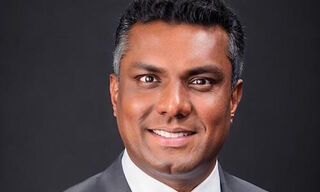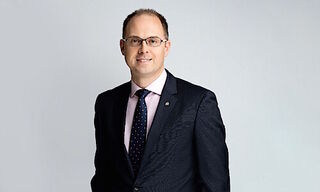In an essay for finews.first, Mobeen Tahir explores if there is a coherent way to think about the equity markets.
This article is published on finews.first, a forum for authors specialized in economic and financial topics.
Investors are intrigued by the possibilities and opportunities in the year ahead. Was the strength in the tech sector transient or will the dominance continue? Are we going to see a reincarnation of value after the challenges faced by a multitude of sectors last year? And most importantly, how do all the different pieces come together?
Here we offer one approach for conceptualizing these problems and developing a cohesive example framework for investing in equities this year. Every investor should make their own decision in establishing their investment needs and constraints to determine how this, or any other framework, can aid their decision making.
The framework is comprised of three key components which together add diversity and balance. Each component has an important role to play.
1. A Core Made of Quality
Quality is an «all-weather» factor that promises balance i.e. the ability to protect against market downturns without foregoing participation in the upside. «Quality» refers to strong and stable businesses that are profitable and typically have relatively low leverage. This enables them to better withstand downside shocks. Since such businesses can exist in any sector, quality does not cause the core of the portfolio to lose its diversity if it supplements or replaces a pure beta exposure.
«The desired economic recovery this year cannot be anticipated entirely without perils»
With many major economies including the U.S. and those in Europe still reeling from the pandemic, the desired economic recovery this year cannot be anticipated entirely without perils. Bankruptcy, in the face of economic challenges, remains one of the key risks facing businesses in the year ahead.
Those companies that entered the pandemic with a strong balance sheet and have stayed profitable enough through the ordeal, make a case to constitute the core exposure
2. Diversity with Cyclicals
Pockets of the global equity market that are poised to benefit from an economic upswing, that may already have started or is impending depending on where you look, can add diversity and growth potential to the portfolio. Numerous avenues can be explored within this component.
«The notion of diversity in equity markets is almost incomplete without emerging markets, particularly China»
Small caps are one of those avenues. Small-cap stocks typically have a high beta with the underlying economy. The buoyancy in stock markets since vaccine news took center stage in November has helped small caps outpace large caps in various markets, e.g. the Russell 2000 Index has overshadowed the S&P 500 Index since the start of November. As the economic recovery gathers steam, small caps are likely to pick up pace too.
The notion of «diversity» in equity markets is almost incomplete without emerging markets, particularly China. The country's success in overcoming the pandemic and swiftly putting its economic recovery on track stands in stark contrast with other major economies.
China has recently reiterated its growth ambitions with a new five-year plan and is reaffirming its global stature through trade and investment deals with partners in the Asia Pacific region as well as the EU. China's strength is expected to permeate into emerging markets more broadly which may find additional support from a weak dollar.
«Value», if defined as businesses or sectors that have faced headwinds from the pandemic and the resulting economic downturn, have an improving outlook as we emerge from the crisis. Within this framework, whether value will outperform growth is not a critical question as the two can coexist in separate buckets.
3. Growth with Thematics
The notion of «growth» is increasingly shifting away from stocks with positive momentum to businesses that align more closely with megatrends. Structural shifts in markets offer investment opportunities that promise growth and offer a potentially longer shelf life.
«In some cases, like Tesla, the valuation multiples may even be absurd»
Investors appear to be placing their faith in such themes as they are built on the principle of «market-creating innovation», i.e. a process that creates new demand which stems from doing things that have not been done before.
Tech-related themes fall neatly within this bracket because of the innovation they bring and how they continue to positively disrupt the status quo. The advent of the smartphone just over a decade ago created a whole new economy of applications and instilled growth that would have been difficult, if not impossible, to foresee.
For this reason, future innovation becomes challenging to price in and comes as a positive surprise when it happens. Growth potential is also why markets might not necessarily anguish over elevated valuation multiples for the tech sector. In some cases, like Tesla, the valuation multiples may even be absurd and defy conventional finance wisdom.
«The growing interest in thematic investing is therefore unlikely to be transitory and may accelerate»
Many investors who sought such themes last year reaped attractive rewards, e.g. some cloud computing strategies more than doubled in value over the year. The growing interest in thematic investing is therefore unlikely to be transitory and may accelerate as a trend itself this year. Having a thematic component in the example framework to complement the core and the diversifiers can add an exciting element of growth potential.
How to weigh the different components and how the equity allocation fits within a broader portfolio are all important considerations for an investor to make. The framework illustrated here is the first step in that discussion and should help synthesize an equity strategy in a year that might present many opportunities for investors.
Mobeen Tahir is a member of WisdomTree's research team. His focus is on providing strategic and tactical insights on global markets and investment products to our clients regarding a wide range of asset classes. Prior to joining WisdomTree in December 2018, he was an investment advisor at Willis Towers Watson. He holds a Bachelor's degree (Hons) in Accounting and Financial Management from Loughborough University and a Master's degree in Finance and Accounting from the London School of Economics and Political Science. He is also a CFA Charterholder.
Previous contributions: Rudi Bogni, Peter Kurer, Rolf Banz, Dieter Ruloff, Werner Vogt, Walter Wittmann, Alfred Mettler, Robert Holzach, Craig Murray, David Zollinger, Arthur Bolliger, Beat Kappeler, Chris Rowe, Stefan Gerlach, Marc Lussy, Nuno Fernandes, Richard Egger, Maurice Pedergnana, Marco Bargel, Steve Hanke, Urs Schoettli, Ursula Finsterwald, Stefan Kreuzkamp, Oliver Bussmann, Michael Benz, Albert Steck, Martin Dahinden, Thomas Fedier, Alfred Mettler, Brigitte Strebel, Mirjam Staub-Bisang, Nicolas Roth, Thorsten Polleit, Kim Iskyan, Stephen Dover, Denise Kenyon-Rouvinez, Christian Dreyer, Kinan Khadam-Al-Jame, Robert Hemmi, Anton Affentranger, Yves Mirabaud, Katharina Bart, Frédéric Papp, Hans-Martin Kraus, Gerard Guerdat, Mario Bassi, Stephen Thariyan, Dan Steinbock, Rino Borini, Bert Flossbach, Michael Hasenstab, Guido Schilling, Werner E. Rutsch, Dorte Bech Vizard, Adriano B. Lucatelli, Katharina Bart, Maya Bhandari, Jean Tirole, Hans Jakob Roth, Marco Martinelli, Thomas Sutter, Tom King, Werner Peyer, Thomas Kupfer, Peter Kurer, Arturo Bris, Frederic Papp, James Syme, Dennis Larsen, Bernd Kramer, Ralph Ebert, Armin Jans, Nicolas Roth, Hans Ulrich Jost, Patrick Hunger, Fabrizio Quirighetti, Claire Shaw, Peter Fanconi, Alex Wolf, Dan Steinbock, Patrick Scheurle, Sandro Occhilupo, Will Ballard, Nicholas Yeo, Claude-Alain Margelisch, Jean-François Hirschel, Jens Pongratz, Samuel Gerber, Philipp Weckherlin, Anne Richards, Antoni Trenchev, Benoit Barbereau, Pascal R. Bersier, Shaul Lifshitz, Klaus Breiner, Ana Botín, Martin Gilbert, Jesper Koll, Ingo Rauser, Carlo Capaul, Claude Baumann, Markus Winkler, Konrad Hummler, Thomas Steinemann, Christina Boeck, Guillaume Compeyron, Miro Zivkovic, Alexander F. Wagner, Eric Heymann, Christoph Sax, Felix Brem, Jochen Moebert, Jacques-Aurélien Marcireau, Ursula Finsterwald, Claudia Kraaz, Michel Longhini, Stefan Blum, Zsolt Kohalmi, Karin M. Klossek, Nicolas Ramelet, Søren Bjønness, Lamara von Albertini, Andreas Britt, Gilles Prince, Darren Willams, Salman Ahmed, Stephane Monier, and Peter van der Welle, Beat Wittmann, Ken Orchard, Christian Gast, Didier Saint-Georges, Jeffrey Bohn, Juergen Braunstein, Jeff Voegeli, Fiona Frick, Stefan Schneider, Matthias Hunn, Andreas Vetsch, Fabiana Fedeli, Marionna Wegenstein, Kim Fournais, Carole Millet, Ralph Ebert, Swetha Ramachandran, Brigitte Kaps, Thomas Stucki, Teodoro Cocca, Neil Shearing, Claude Baumann, Tom Naratil, Oliver Berger, Robert Sharps, Tobias Mueller, Florian Wicki, Jean Keller, Fabrizio Pagani, Niels Lan Doky, Karin M. Klossek, Ralph Ebert, Johnny El Hachem, Judith Basad, Katharina Bart, Thorsten Polleit, Beat Wittmann, Bernardo Brunschwiler, Peter Schmid, Karam Hinduja, Stuart Dunbar, Zsolt Kohalmi, Raphaël Surber, Santosh Brivio, Gérard Piasko, Mark Urquhart, Olivier Kessler, Bruno Capone, Peter Hody, Lars Jaeger, Andrew Isbester, Florin Baeriswyl, and Michael Bornhaeusser, Agnieszka Walorska, Thomas Mueller, Michael Welti, Ebrahim Attarzadeh, Marcel Hostettler, Hui Zhang, Michael Bornhaeusser, Reto Jauch, Angela Agostini, Guy de Blonay, Tatjana Greil Castro, Jean-Baptiste Berthon, Marc Saint John Webb, and Dietrich Groenemeyer.





















